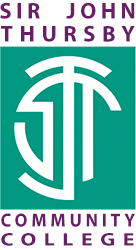Year 7 Physical Education
| Physical Education | |||
| Topic | Gymnastics | ||
| No of lessons | 6 | ||
| When is it happening | Term 2 Year 7 | ||
| What will students learn |
Students will learn travel, balance, partner work and sequencing. Plus specific gymnastic skills. Strength training and conditioning to include plank, sit up and modified/full press up. Importance of Warming up and Physical Benefits:· Raises heart rate to allow blood flow to increase to pump efficiently around the body providing oxygen to muscles. Importance of Cooling Down after Physical Activity. Muscle groups in relation to warming up and use in sports. |
||
| Key Knowledge that students should know at the end of 'Topic' | This is the knowledge that students will meet for the first time in this topic |
Demonstrate the correct technique and understand how to adjust the technique to maintain balance, strength and endurance in plank, sit up and press up. Understanding and applying pulse raiser, stretch and mental preparation. Students will learn how to perform basic movement skills including jumps and basic rolls. Students will perform these movements in a small sequence. For example travel, roll, travel. Students will then extend performing these movements in a more complex sequence that includes a variety of rolls and travelling that are performed well. Students will experience the introduction of apparatus where they can adapt their sequences to include apparatus and low level vaults. |
|
| This is knowledge that students may have met before but will need to deepen their understanding |
Students will have knowledge of basic skills such as turn, roll and jump. Students will understanding what a short sequence looks and feels like. |
||
| Key Skills that students should be able to demonstrate at the end of 'Topic' | This is the skills that students will meet for the first time in this topic |
Demonstrate basic movement skills including jumps and basic rolls. Perform these movements in a small sequence. For example travel, roll, travel. Perform these movements in a more complex sequence that includes a variety of rolls and travelling that are performed well. Develop ability to use apparatus and include this in a sequence with low level vaults. |
|
| This is skills that students may have met before but will need to develop |
Refine basic balances on different body parts, including support of hand and/or head stands. To understand the importance of aesthetics and fluency in routines. To develop how to recognise good performance in simple gymnastics routines and suggest reasons for this. To develop ability to recognise strengths and areas for development. Introduce apparatus and low level vaulting as part of sequencing. |
||
| Key vocabulary that students should know and understand |
Jumps, travel, basic rolls, perform, small sequence, apparatus |
||
| The Big Question | Where does gymnastics originate from? | ||
|
Key questions that students should be able to answer at the end of the 'Topic'
|
What is travel? Why is this important in gymnastics? | ||
| Why are turns, rolls and jumps important when developing a sequence? | |||
| Why do we need body conditioning to be a successful gymnast? | |||
| What does a good press up, sit and plank look like? How can we improve our ability to experience and demonstrate these? | |||
| What does a great sequence look like? Why? What is body tension? | |||
| How do we give constructive feedback to help our peers develop their performance? | |||
| What is aesthetic appreciation? | |||
| How can we develop our own gymnastic skills? | |||
| What are the safety elements of balance, Counter balance, individual and partner? | |||
| How can we improve the sequence? | |||
| How can we include apparatus into our sequence and adapt our floor work sequence to using apparatus? | |||
| What is a vault? How can we execute this safely and successfully? | |||
